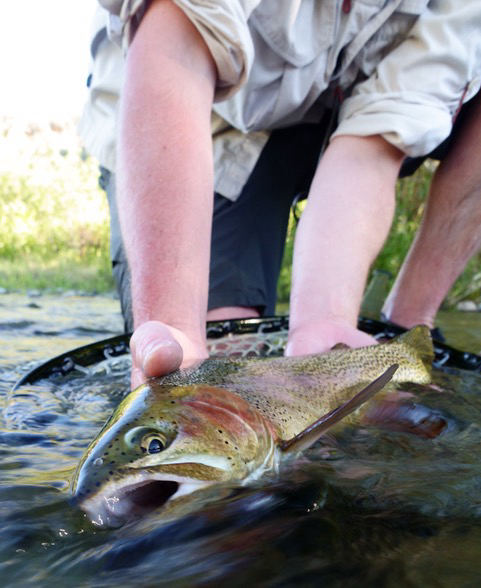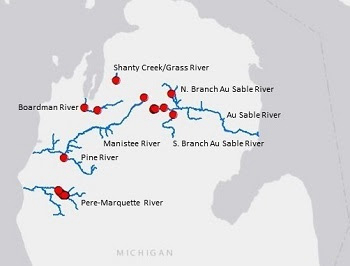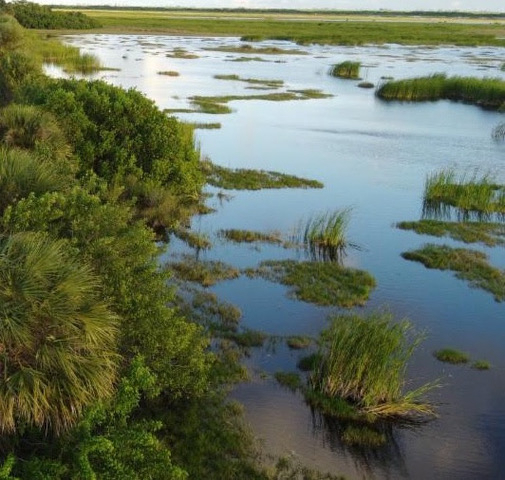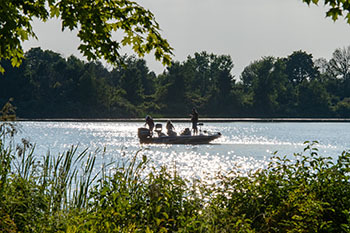Tips on Michigan’s Best Brown Trout Waters

Native to Europe and parts of Asia, brown trout were introduced to Michigan – one of the first states to import them into North America – in 1883 and they now thrive statewide. Though they are often thought of as denizens of Up North, brown trout are more tolerant of warmer water temperatures than other trout species. As a result, browns have become the principle target of anglers in many rivers across the state, ranging from Michigan’s best-known trophy waters to small, marginal trout streams in southern Michigan.
Brown trout provide good fishing in many, mostly northern Michigan, inland lakes. Anglers use a wide variety of methods, from fishing with live bait on the bottom to trolling with minnows or artificial baits. In the Great Lakes, brown trout can offer outstanding sports in the early spring – often before other species begin to bite – to anglers who wade, fish from piers with live bait or artificial lures, or who troll in largely inshore water with imitation minnows or other plugs. Browns are often taken in conjunction with coho in the spring or incidentally with other salmon during the summer.
In the Great Lakes, brown trout can offer outstanding sports in the early spring – often before other species begin to bite – to anglers who wade, fish from piers with live bait or artificial lures, or who troll in largely inshore water with imitation minnows or other plugs. Browns are often taken in conjunction with coho in the spring or incidentally with other salmon during the summer.
Brown trout in streams – especially large specimens – seem to be photo-sensitive and are usually more cooperative on rainy or overcast days. Though they will take all manner of live bait as well as spinners or artificial minnows, brown trout are a favorite of fly fishermen, many of whom pursue them after dark during notable insect hatches, especially the giant Michigan mayfly (Hexagenia limbata). But large streamers and big splashy surface flies, such as mouse patterns, produce well, too.
Some of Michigan’s best known trout streams – such as the Au Sable, the Pere Marquette and the Manistee Rivers – are noted for their brown trout fisheries. Inland brown trout lakes include Higgins, Burt, Mullet, McCormick (near Atlanta) and Bear (Kalkaska County).
Click here for brown trout, better fishing waters.
For more information on identifying characteristics for brown trout see our fish ID page.






